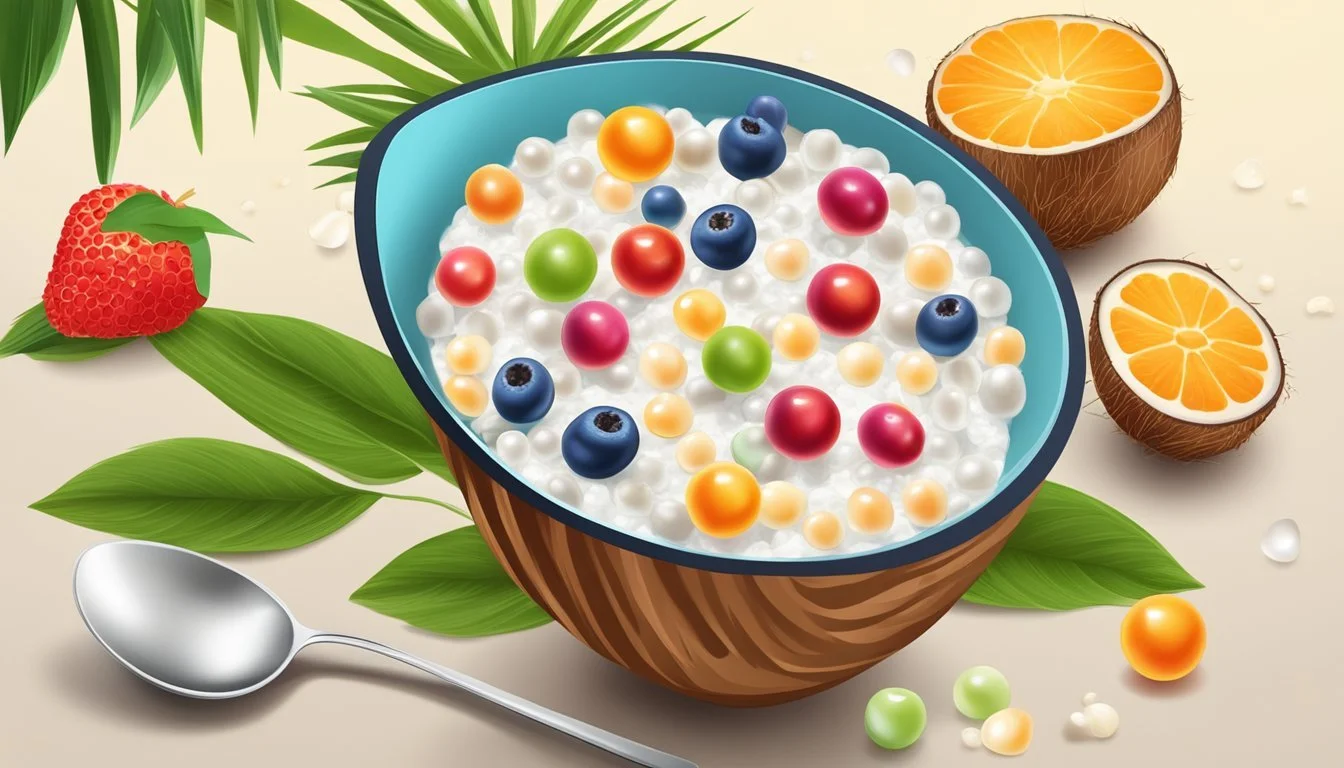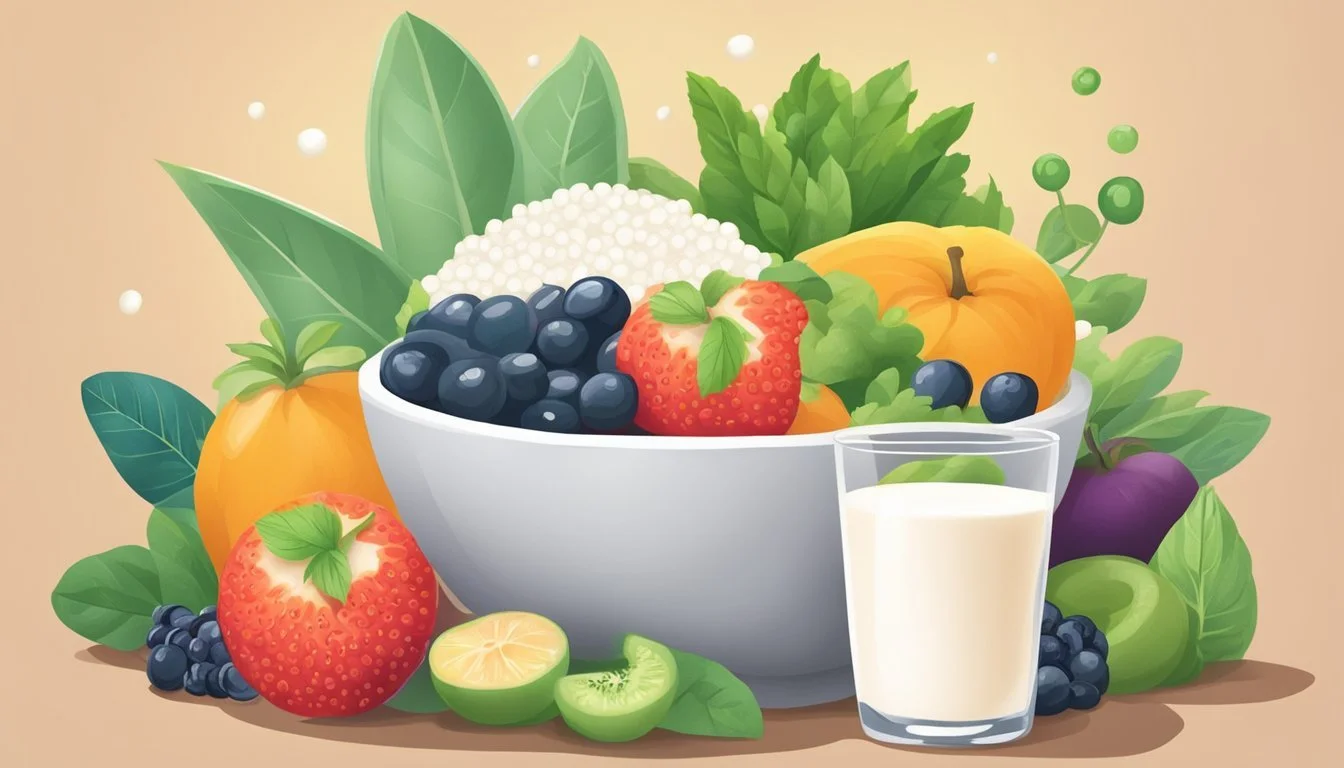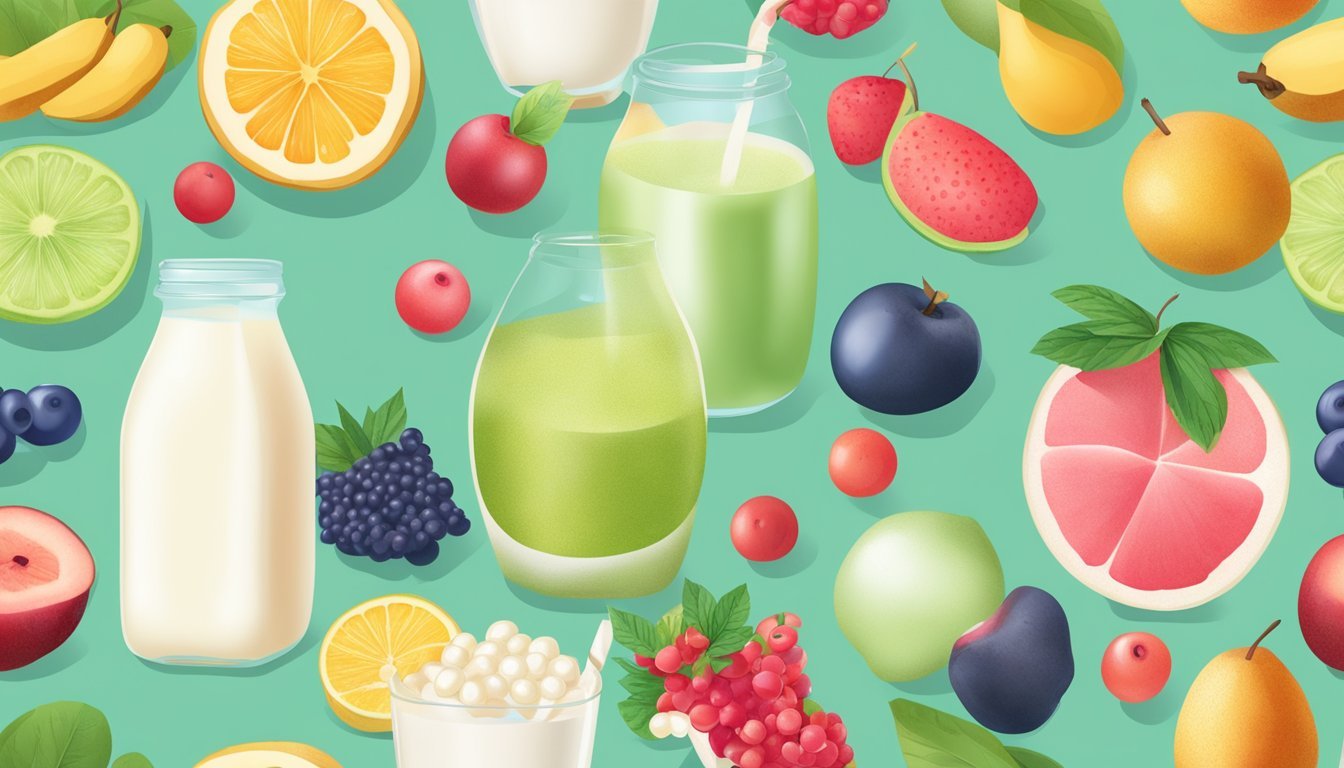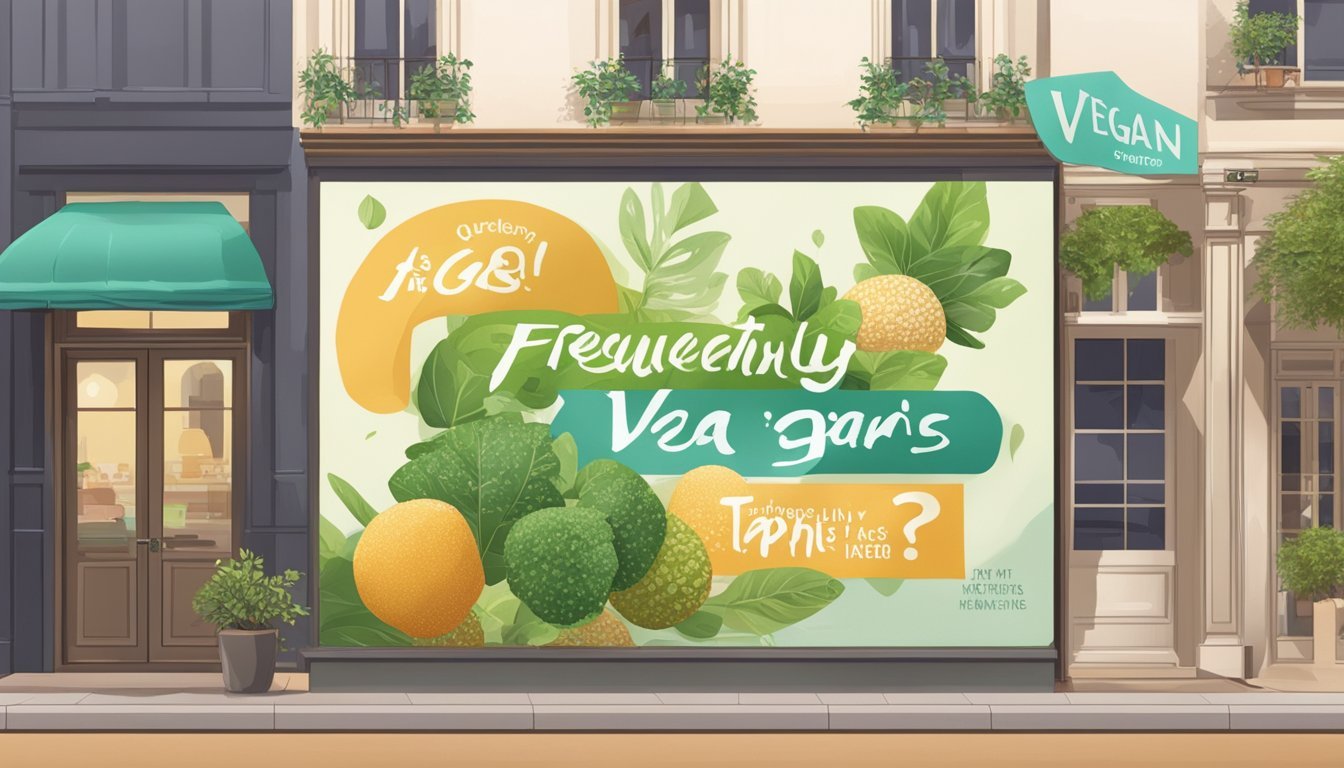Is Tapioca Vegan?
Unveiling the Truth About This Popular Ingredient
Tapioca, a starch extracted from the cassava root, is an ingredient prevalent in a variety of culinary applications, from thickening soups and sauces to becoming a chewy delight in bubble teas and puddings. Its origins lie in South America, but its use has spread globally, partly due to its versatility and plant-based nature. As such, it aligns with vegan dietary principles, which exclude animal products for ethical, environmental, or health reasons.
In the realm of desserts, tapioca often takes center stage as a key ingredient in the classic tapioca pudding, a dessert cherished for its unique texture and mild flavor which pairs well with a myriad of fruit-based toppings. When exploring the compatibility of tapioca with a vegan diet, it's crucial to note that while the starch itself is vegan, the presence of other non-vegan ingredients in certain tapioca-containing products can shift its vegan status. Therefore, those adhering to a vegan diet should scrutinize ingredient lists to ensure all components align with their dietary choices.
The rise of plant-based eating patterns has led to innovative uses of tapioca in vegan alternatives to dairy-based cheeses, yogurts, and other traditionally non-vegan foods. Thus, tapioca has gained prominence as a valuable and adaptable component in vegan cuisine, contributing to its culinary diversity without compromising on ethics or dietary restrictions.
What Is Tapioca?
Tapioca is a versatile starch derived from the cassava root, utilized extensively as a thickening agent in various culinary applications. It’s inherently gluten-free and plant-based, making it an ideal ingredient for those following vegan diets and with gluten sensitivities.
Origins and Derived Products
Cassava Plant: Native to South America, the cassava plant, also known as manioc, is the source of tapioca. The roots are rich in carbohydrates and serve as a staple in many tropical countries.
Derived Products:
Tapioca Pearls: Often found in bubble tea, these are made by processing cassava into small, spherical forms.
Tapioca Starch/Flour: A refined product extracted from cassava, it's used as a thickener in sauces, soups, and desserts, and can also be found in baked goods for those requiring a gluten-free option.
Bob’s Red Mill: A brand known for its natural health products, including small pearl tapioca which is praised for its purity and suitability for vegans.
Tapioca in the Food Industry
Thickening Agent: Tapioca starch is widely used as a thickener because of its ability to withstand long cooking times and freeze-thaw cycles without breaking down, making it a reliable choice for commercial use.
Gluten-Free Ingredient: With the rise in demand for gluten-free products, tapioca flour has become a key component in formulating gluten-free baked goods that mimic the texture and structure of their gluten-containing counterparts.
Desserts and Drinks: Aside from its thickening properties, tapioca is a common ingredient in various desserts and drinks, ranging from traditional pudding to contemporary bubble tea, favored for its unique chewy texture.
Is Tapioca Vegan-Friendly?
Tapioca is a plant-based starch with vegan attributes, but the vegan-friendliness of tapioca-based products can vary depending on added ingredients.
Understanding Veganism
Veganism is a lifestyle that seeks to exclude the use of animal products and by-products to the greatest extent possible. Individuals following a vegan diet avoid foods containing any animal-derived components, including dairy, eggs, and honey. Given that tapioca is extracted from the cassava root, it is inherently vegan. It serves as a versatile ingredient in various vegan-friendly products such as vegan cheese and is often used as a thickening agent in dairy-free and plant-based milk alternatives.
Common Non-Vegan Additives in Tapioca Products
While tapioca itself is vegan, certain tapioca products may contain non-vegan additives that are not suitable for a vegan diet. Here are some additives commonly found in processed foods that can render tapioca products non-vegan:
Dairy: Often found in tapioca pudding and desserts.
Gelatin: A thickener derived from animal collagen, sometimes used in gummy candies or jellies.
Casein: A milk protein that may be present in some "non-dairy" creamers.
Ingredient lists on processed foods containing tapioca should be reviewed carefully. Vegans should look for certifications or labels that indicate a product is vegan, ensuring it contains no animal-derived ingredients or additives.
A table summarizing the vegan status of various tapioca forms:
Form of Tapioca Typical Vegan Status Tapioca Pearls Vegan Tapioca Flour Vegan Tapioca Pudding Often non-vegan Tapioca in Vegan Cheese Vegan
In conclusion, tapioca as an ingredient is vegan-friendly, but it remains essential for consumers to verify individual products' ingredient lists to maintain adherence to veganism.
Making Vegan Tapioca Pudding
Creating a delicious vegan tapioca pudding requires careful selection of plant-based ingredients and adherence to specific cooking steps to achieve the perfect creamy texture. This dessert avoids all dairy products and instead utilizes ingredients such as almond milk, coconut milk, and maple syrup for a rich, satisfying vegan treat.
Ingredients for Vegan Tapioca Pudding
The following list details the essential components for a dairy-free version of this classic dessert:
Milk Alternative: Typically, almond milk or coconut milk serves as the base for vegan tapioca pudding. One may use a combination for added flavor.
Sweetener: Maple syrup or an alternative sweetener provides the desired sweetness without using animal products.
Thickening Agent: Small pearl tapioca serves as the thickener, giving the pudding its characteristic texture.
Additional Flavorings: Vanilla extract can be added to enhance the pudding's flavor profile.
Below is a tabulated list of ingredients for clarity:
Ingredient Amount Notes Small pearl tapioca 1/2 cup Essential for texture Almond milk 2 cups Can be split with coconut milk Coconut milk 1 cup For creaminess (optional) Maple syrup 1/4 cup Adjust to taste Vanilla extract 1 teaspoon Adds depth to the pudding's flavor Salt A pinch To balance the sweetness
Step-by-Step Cooking Process
Preparation: Begin by soaking the small pearl tapioca in almond milk for a minimum of two hours to soften. This soaking process is crucial for achieving the right consistency.
Combine Ingredients: In a medium saucepan, whisk together the remaining almond milk with coconut milk, soaked tapioca, maple syrup, and a pinch of salt.
Cook the Mixture: Place the saucepan over medium heat. Wait until the mixture is close to boiling, showing the first signs of bubbles at the edges, then reduce to a simmer.
Stir Frequently: As the pudding simmers, it's important to stir frequently to prevent sticking and burning. Continue this process until the pudding thickens, and the tapioca pearls turn translucent, about 15 to 30 minutes.
By carefully following these steps with the appropriate ingredients, one can create a creamy and satisfying vegan tapioca pudding.
Nutritional Information and Health Benefits
Tapioca is a starchy substance harvested from the roots of the cassava plant. It provides calories primarily in the form of carbohydrates and is naturally gluten-free, making it a suitable option for those with celiac disease or gluten intolerance.
Tapioca's Macronutrient Profile
Tapioca is composed almost entirely of carbohydrates, with a minimal protein or fat content. A 1/4 cup serving of tapioca starch typically contains:
Calories: 100-110
Carbohydrates: 26-28 grams
Protein: 0 grams
Fat: 0 grams
Dietary Fiber: 0 grams
The absence of dietary fiber means that tapioca can lead to a quick spike in blood sugar levels, which is why it has a high glycemic index. Although it lacks fiber, it's an energy-dense food that provides a quick source of carbohydrates.
Vitamins, Minerals, and Dietary Advantages
Tapioca is not a significant source of vitamins or minerals. However, its gluten-free property is advantageous for those who need to avoid gluten for health reasons, such as individuals with celiac disease. Tapioca starch can be used as a thickener in gluten-free baked goods and other recipes, which can enhance texture and maintain moisture.
As a dietary component, tapioca can be beneficial when used in conjunction with a varied diet that includes sources of fiber, vitamins, and minerals. Since it doesn't provide these nutrients, it's important to ensure they come from other foods within the diet.
Creative Variations and Serving Ideas
Vegan tapioca pudding serves as a versatile dessert that can cater to a variety of tastes and presentations. By incorporating diverse flavors and toppings, one can elevate the simple pudding to a more sophisticated dish.
Fruit and Flavor Add-Ins
Introducing fruit into vegan tapioca pudding not only adds a burst of natural sweetness but also enhances the texture. Mango, diced into small pieces, can infuse the pudding with a tropical flair. Berries, such as strawberries or raspberries, offer a tart contrast to the pudding's subtle sweetness and contribute to a visually appealing dish. For those seeking a warm, spicy note, a sprinkle of cinnamon can provide an aromatic depth that complements the neutral base of tapioca.
Mango: Incorporate diced mangoes for a tropical essence.
Berries: Mix in strawberries or raspberries for a tangy kick.
Cinnamon: A dash of cinnamon for spice and aroma.
Toppings and Presentation
The finishing touches to a bowl of vegan tapioca pudding can transform it from an everyday treat to an eye-catching dessert. Coconut whipped cream stands as a dairy-free alternative to traditional whipped cream, offering a light and fluffy texture that pairs well with the creaminess of tapioca pudding. For added texture, chefs can sprinkle a medley of fresh fruit on top prior to serving. Those with a penchant for chocolate might drizzle melted dark chocolate over the chilled pudding for an instantly luxurious topping. When presenting the dessert, it can be portioned into individual servings and should be served chilled, to maintain its firm texture.
Coconut Whipped Cream: Dollop on top for a vegan take on creaminess.
Fresh Fruit: Garnish with an assortment of fresh fruit for a vibrant presentation.
Chocolate: Drizzle with dark chocolate for extra indulgence.
To store leftovers, it is recommended to refrigerate the pudding in an airtight container, ensuring it remains fresh and maintains its desired consistency.
Frequently Asked Questions
In this section, readers will find information on viable substitutes for tapioca in various recipes, as well as guidance on how to properly store tapioca products to maintain their quality and shelf life.
Substitutes for Tapioca in Recipes
When a recipe calls for tapioca and it's not available, or if one prefers to use an alternative, there are several substitutes that can be employed. They each have their own characteristics and can influence the texture and result of a dish differently:
Arrowroot starch: A gluten-free substitute that makes an excellent thickener and can replace tapioca in a 1:1 ratio.
Potato starch: Another gluten-free alternative with a similar thickening power, but it may provide a creamier texture.
Cornstarch: A readily available thickener that works well in sauces and soups, with a 1:1 substitution ratio.
One may need to adjust the quantity of these substitutes to achieve the desired consistency, as their thickening properties can vary slightly. Vegan pudding recipes often call for tapioca because of its ability to create a desirable texture, but the substitutes mentioned can also yield a satisfactory result.
Storing and Shelf Life of Tapioca Products
Tapioca products should be stored correctly to prolong their freshness and usability:
In the fridge: Cooked tapioca products, like vegan pudding or bubble tea, should be stored in the fridge if not consumed immediately.
In a glass container: For dry tapioca pearls or flour, a sealed glass container is ideal to protect from moisture and odors.
Shelf life: Uncooked dry tapioca pearls or flour can last for a long time when stored properly in a cool, dry place. Cooked tapioca products are best enjoyed within a few days.
Note that improper storage can lead to spoilage or a decrease in quality. Each type of product may have specific storage recommendations, so it's wise to refer to the packaging for instructions.






